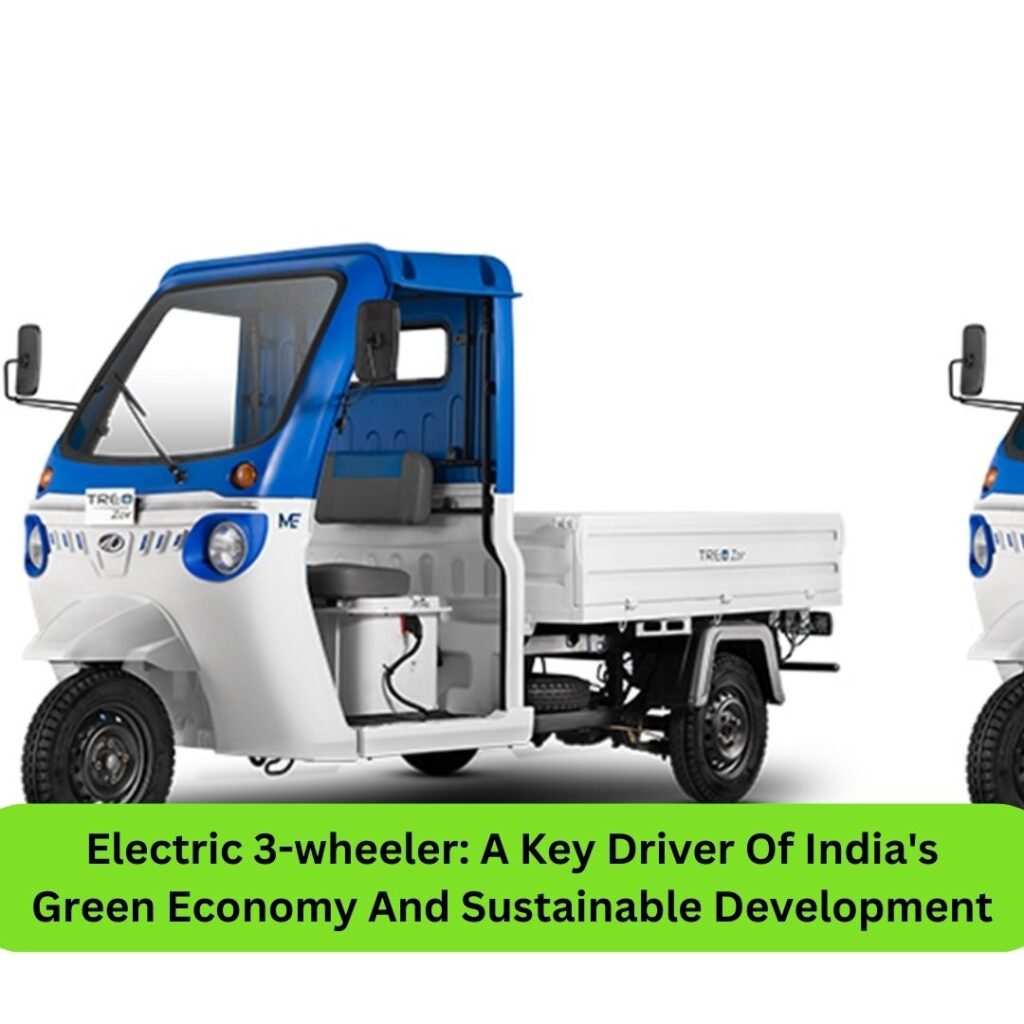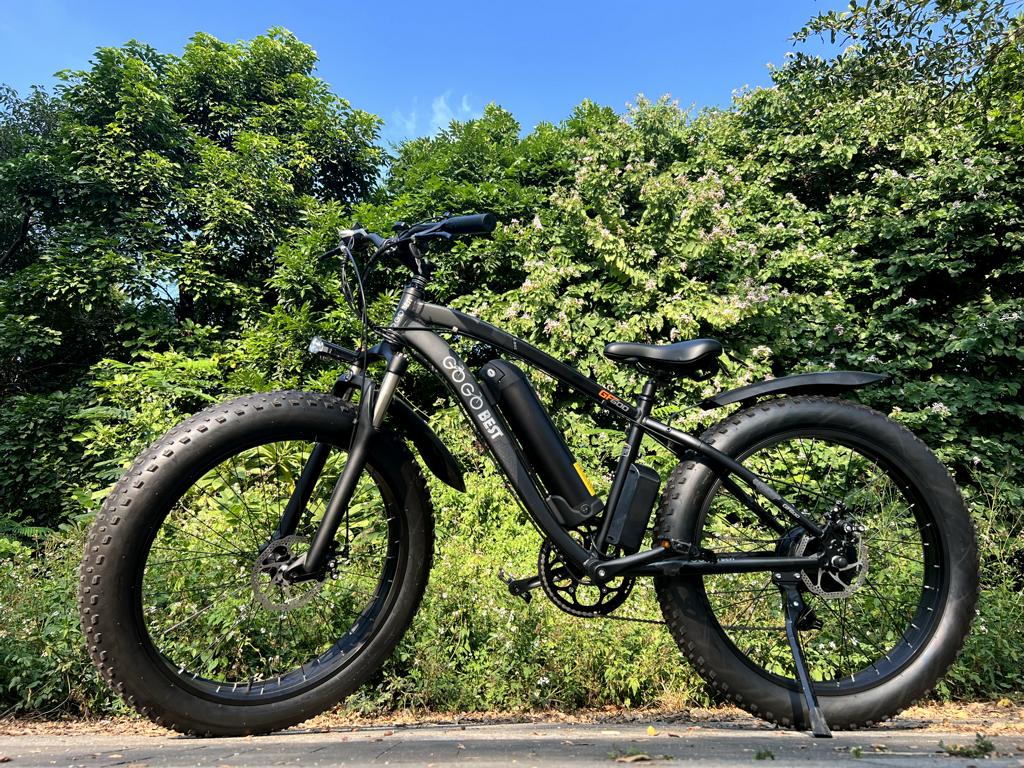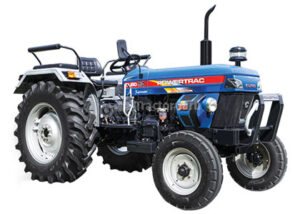Electric 3-wheeler: A Key Driver Of India’s Green Economy And Sustainable Development

As the nation progresses towards a cleaner and greener future, there is a growing desire for sustainable transportation options. Electric 3-wheelers sometimes referred to as e-rickshaws, have emerged as a possible replacement for conventional fossil-fuel-powered vehicles in this situation. There are numerous uses for this electric vehicle, including passenger transportation, delivery of commodities, and rubbish collection. They are also excellent last-mile connectivity because they are economical, easy to use, and environmentally friendly. This article will evaluate how electric 3-wheelers influence future urban mobility and sustainable transportation while also examining these vehicles’ various applications, market trends, and growth potential.
Exploring The Applications, Market Trends, And Growth Potential Of Electric 3-Wheelers
Application Of Electric 3-Wheeler
Applications for electric three-wheelers range from trash pickup to the delivery of products. Because of their environmental friendliness, low maintenance requirements, and usability, these vehicles are rising in popularity worldwide. Here are some different uses for electric three-wheelers.
Delivery of Goods
It’s excellent to deliver goods on electric 3-wheelers like the Euler Hi Load. To get shipments and commodities from warehouses to customers’ doorsteps, delivery and e-commerce businesses frequently use them. Also, they are perfect for last-mile deliveries because they can readily fit through streets and alleyways that are too narrow for larger vehicles. They are also cheaper and environmentally friendly than standard delivery vehicles.
Agriculture
Applications for electric 3-wheelers are now also emerging in the agricultural industry. These vehicles move agricultural goods from farms to marketplaces in rural locations. Also, they move equipment and farm inputs like seeds, fertiliser, and equipment. Due to their ease of use on uneven terrain and dirt roads, electric three-wheelers are perfect for use in agriculture.
Street Vending
Also utilised for street vending are electric 3-wheelers. Street vendors commonly use this transportation option in numerous cities and villages. They are perfect for street vending. They do not need a stationary power source because they contain solar panels and batteries.
Waste Collection
Waste collection also makes use of electric 3-wheelers. Electric 3-wheelers serve to collect household trash from door to door in numerous cities and municipalities. Because they have waste collection baskets, they can easily go through narrow streets and alleyways where larger garbage collection vehicles cannot. Also, these vehicles serve the purpose of sorting and getting rid of rubbish.
Hospitality Industry
The hospitality industry uses electric 3-wheelers as well. They are quiet and environmentally friendly, making them perfect for usage in tourist locations. Electric 3-wheelers are often used to move hotel guests’ luggage to and from train stations and airports.
Market Trends Of Electric 3-wheeler
Electric three-wheelers are becoming increasingly popular in India as more people explore alternatives to conventional gasoline-powered vehicles. In addition, India’s government is one of the world’s largest three-wheeler markets. Also, it has been actively promoting electric transportation to lessen pollution and reliance on fossil fuels. As a result, the market for electric 3-wheelers in India is growing swiftly. So, this growth potential will continue in the next years.
Market Trends
In India, the market for electric 3-wheelers has been expanding slowly, and in the upcoming years, growth is anticipated to pick up. According to Research and Markets, the Indian electric three-wheeler market will be valued at $1.5 billion in 2020. It is expected that by 2025, it will have increased at a CAGR of 29.91%, reaching $5.4 billion. According to the survey, the government’s push towards electric mobility, growing concerns about air pollution, and rising fuel prices are mostly responsible for the market’s growth.
Bajaj Auto is one of the key companies in the Indian industry for electric 3-wheelers. The Bajaj RE Electric, the company’s electric 3-wheeler, has been gaining popularity. According to a report by ETAuto, Bajaj Auto sold over 1,000 of its electric 3-wheelers in the first quarter of 2021, a significant increase over the same period in the last year. Mahindra Electric, Kinetic Green, Atul Auto, and Piaggio are additional market players.
Growth Potential
The market for electric 3-wheelers in India has enormous development potential, given the size of the nation’s population and the pace of its urbanisation. The International Energy Agency forecasts that by 2030, India will account for nearly 30% of all global sales of electric vehicles, making it the largest market globally. According to the report, electric 3-wheelers will likely predominate among electric vehicles in India. This is due to their lower costs and high adoption rates in urban and rural areas.
Via several programmes and initiatives, the Indian government has actively supported electric mobility. The Faster Adoption and Manufacture of (Hybrid &) Electric Vehicles (FAME) plan is one such project that offers financial incentives for buying electric automobiles. In addition, the government of India has allotted Rs 10,000 crore ($1.37 billion) under the FAME II programme to promote electric vehicles in the country. The programme also offers financial incentives for constructing charging infrastructure, which is essential for expanding the Indian market for electric 3-wheelers.
The market for electric 3-wheelers is anticipated to increase due to rising last-mile connectivity demand and India’s expanding e-commerce industry. With businesses like Flipkart, Amazon, and BigBasket adopting electric 3-wheelers for their delivery operations, the use of electric 3-wheelers for last-mile delivery has been growing in popularity in India. In addition, electric 3-wheelers are more cost-effective and environmentally responsible than traditional delivery trucks. Hence, it is projected that their use for last-mile delivery will increase.
Challenges
Despite the growth potential, the electric 3-wheeler market in India still needs to overcome several challenges.
Charging Infrastructure
The requirement for charging infrastructure is one of the main obstacles. For example, India had 850 public EV charging stations as of 2020, which is much fewer than other nations, according to a BloombergNEF analysis.
The demand for charging infrastructure severely discourages those who want to switch to electric 3-wheelers because there is a problem with the accessibility of charging stations.
Higher Upfront Cost
Another area for improvement is that electric 3-wheelers are more expensive upfront than their gasoline-powered equivalents. The higher upfront cost of electric 3-wheelers can be a drawback for many consumers, particularly those in the lower income band, even though they have lower operating and maintenance costs. The Indian government has implemented incentive programmes to address this issue, but more has to be done to promote the usage of electric 3-wheelers.
Lack Of Awareness And Education
The need for greater knowledge and instruction regarding electric vehicles is another obstacle. Many Indians must know about electric vehicles’ advantages since they are reluctant to transition to electric 3-wheelers. However, government officials and business leaders are collaborating to develop public awareness campaigns and inform the public of the benefits of electric mobility.
Conclusion
In conclusion, electric 3-wheelers are a viable substitute for conventional fossil-fuel-powered vehicles and have many uses. They are the perfect answer for last-mile connectivity and mobility in crowded urban and rural areas since they are environmentally friendly, economical, effective, and simple. The market for electric 3-wheelers will expand quickly in the next years due to the Indian government’s push towards electric mobility and the increasing demand for environmentally friendly transportation options. Yet, there is a need for policy support, infrastructure improvement, and technological innovation to realise these vehicles’ promises fully. To create a future on three wheels that is cleaner, greener, and more sustainable, stakeholders from both the public and commercial sectors must collaborate.




